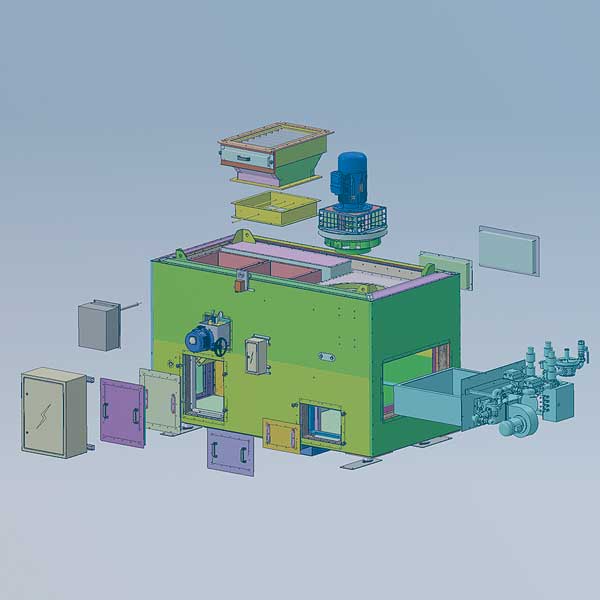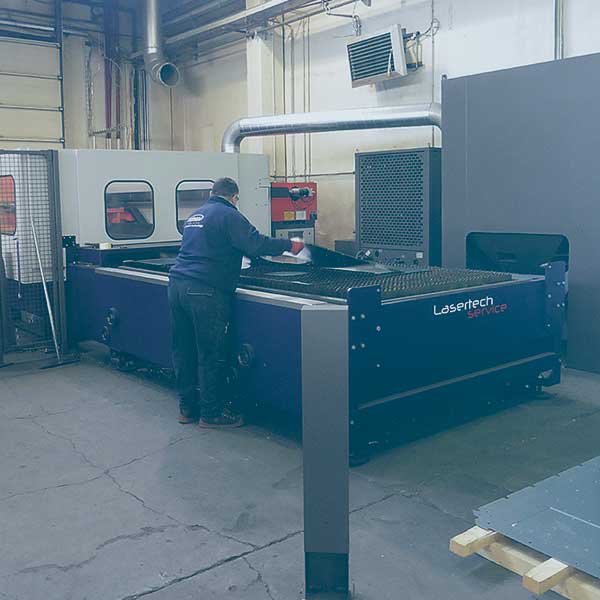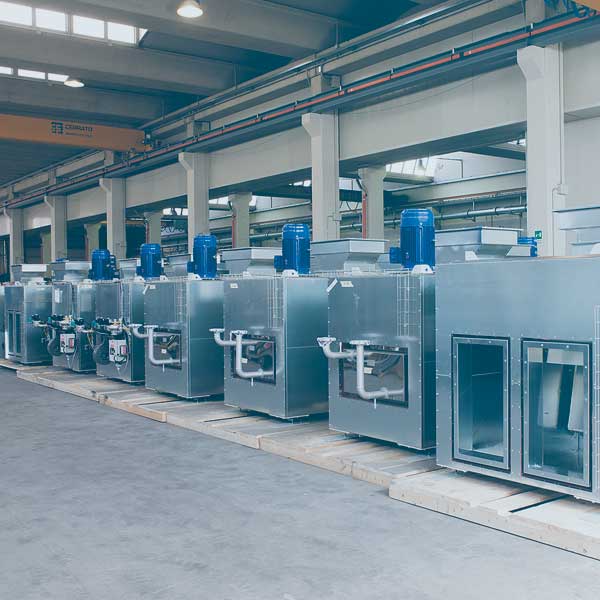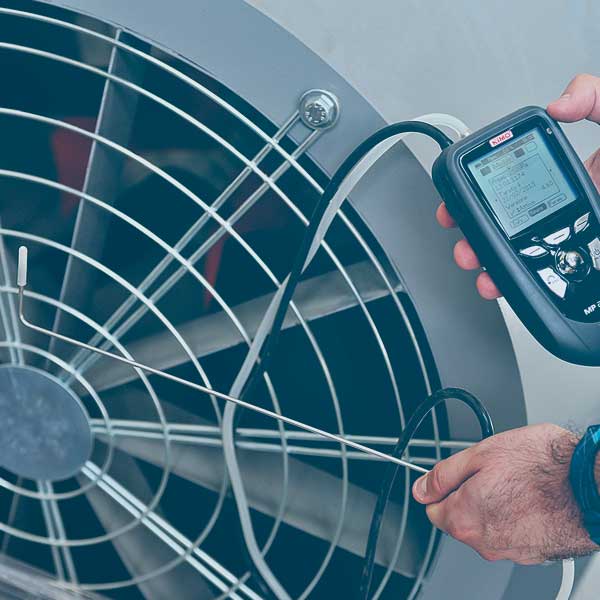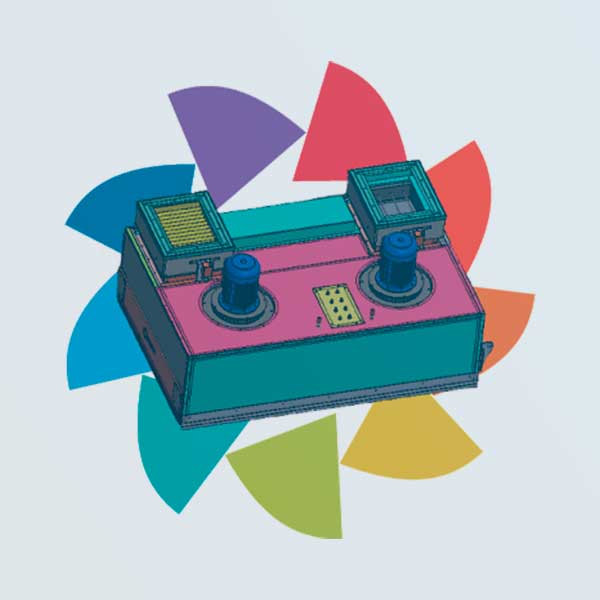Automotive Testing Fans
Automotive Testing Fans
Markets
Rimor S.r.l. manufactures wind simulators for chassis dynamometers, that reach high speeds, work in temperature conditions with large thermal excursions, and to guarantee flow homogeneity from each cross-section outlet, just as required by the various regulations including the WLTP.
Rimor manufactures ventilation units for climatic chambers and exhaust gas extraction systems as well, which suitable for the various control tests that are carried out in the automotive testing field. Rimor S.r.l. therefore, it is able to guarantee ventilation units that comply with all the regulations in force in the automotive sector to meet the needs of all automotive manufacturers globally.
Rimor’s wind simulators are wheeled and divided into three categories: helicoidal, centrifugal, and centrifugal.
The wind simulators that Rimor develops and manufactures are suitable for working in climatic chambers and therefore at temperatures well below zero, subject to continuous and sudden changes in speed, (acceleration, deceleration) and climatic conditions, furthermore, on request, all the units can include a height regulation system. These wind simulators for climatic chambers where the room temperatures that can even reach -30°C while the airflow speed of the wind simulators range from 90 to 300 km/h.
Rimor wind simulators are high-performance units with direct or alternating current motors and can be configured with electric or hydraulic lifting systems.
Rimor’s wind simulators used in the automotive testing sector (including motorcycles) are ventilation units that have been developed and sold for over 20 years with installations at major Italian and foreign manufacturers among which are included: Lamborghini, FCA, General Motors, Huskvarna, BRC, Volkswagen, BMW, Magneti Marelli, Mercedes-Benz.
Series Products
| General attachment: Brochure | Brochure NEW | |||
|---|---|---|---|
| Series | Photo | Description | Attachment |
| Axial wind simulator | 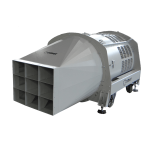 |
Axial wind simulator – Single stage series | Brochure |
| Axial wind simulator | 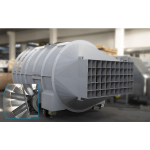 |
Axial wind simulator – Double stage series | Brochure |
| Centrifigual wind simulator | 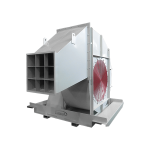 |
Centrifigual wind simulator – single stage series | Brochure |
| Centrifigual wind simulator | 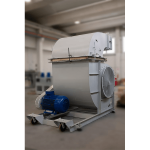 |
Centrifigual wind simulator – double stage series | Brochure |
| Tangential | 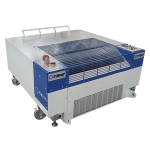 |
Tangential wind simulator | Brochure |
| General attachment: Brochure | Brochure NEW |
|---|
| Series |

Axial wind simulator – Single stage series |

Axial wind simulator – Double stage series |

Centrifigual wind simulator – single stage series |

Centrifigual wind simulator – double stage series |

Tangential wind simulator |
Accessories
| Accessory | Description | Attachment |
|---|---|---|
| Special climates | – | Brochure |
| Atex version series | In case it is necessary, it is also possible to have an ATEX certification for the wind simulators. | Brochure |
| Manual handling on wheels | The manual wheel-based handling of wind simulators of all types, axial (single and double stage), centrifugal (single and double suction), tangential – simpler, and more effective model at the same time – is carried out with high-quality wheels and anti feet crush system. | Brochure |
| Electrical handling | Electrical handling is Rimor’s most technological solution for wind simulators handling. | Brochure |
| Screw lifting | The screw lifting method is the simplest way to lift the wind simulator and bring the outlet in the correspondence of the car radiator. | Brochure |
| Reducer lifting | The manual lifting system with reducer is a practical and economical solution that speeds up and simplifies the manual lifting of the wind simulator in testing rooms. | Brochure |
| Electrical lifting | The electric lifting system is applied to Rimor wind simulators and allows the machinery to be positioned in a precise, easy and comfortable way at the desired height. | Brochure |
| Hydraulic lifting | The system is applied on heavier wind simulators where handling is more critical or in climatic chambers where climatic conditions make it difficult to use electric servo-drives. | Brochure |
| Standard drive | The standard drives are generally IP54 electrical panels positioned on board of the wind simulator that is positioned in the testing room for automotive testing. | Brochure |
| Drive with beaking resistors | Drives with breaking resistors can be equipped on all Rimor wind simulators. | Brochure |
| Accessory |
|---|
| Special climates Often it is necessary to carry out tests in climatic chambers at reduced temperatures, well below 0°C. Brochure |
| Atex version series In case it is necessary, it is also possible to have an ATEX certification for the wind simulators. Brochure |
| Manual handling on wheels The manual wheel-based handling of wind simulators of all types, axial (single and double stage), centrifugal (single and double suction), tangential – simpler, and more effective model at the same time – is carried out with high-quality wheels and anti feet crush system. Brochure |
| Electrical handling Electrical handling is Rimor’s most technological solution for wind simulators handling. Brochure |
| Screw lifting The screw lifting method is the simplest way to lift the wind simulator and bring the outlet in the correspondence of the car radiator. Brochure |
| Reducer lifting The manual lifting system with reducer is a practical and economical solution that speeds up and simplifies the manual lifting of the wind simulator in testing rooms. Brochure |
| Electrical lifting The electric lifting system is applied to Rimor wind simulators and allows the machinery to be positioned in a precise, easy and comfortable way at the desired height. Brochure |
| Hydraulic lifting The system is applied on heavier wind simulators where handling is more critical or in climatic chambers where climatic conditions make it difficult to use electric servo-drives. Brochure |
| Standard drive The standard drives are generally IP54 electrical panels positioned on board of the wind simulator that is positioned in the testing room for automotive testing. Brochure |
| Drive with beaking resistors Drives with breaking resistors can be equipped on all Rimor wind simulators. Brochure |
Other Products
| Products | Description | Attachment |
|---|---|---|
| End of line portal | The Rimor end-of-line portal for end-of-line test cars is a mobile fan that was created with the aim of cooling cars at their first ignition after production. | Brochure |
| Wall fan | The Wall Fan is a high-performance ventilation system that we use to test vehicles. The ventilation is generated by a series of fans placed on a wall in order to generate very high flow rates and with an optimal distribution on the output. | Brochure |
| Engine testing ventilation | Engine test cell ventilation is a hot-flow, engine test room, other components or even automotive test room system. | Brochure |
| Hot spots cooling | Cooling trolley Subfan used to dissipate hot spots such as brakes in tests for motor vehicles, engine parts in hot tests or heat generating parts such as clutches or gearboxes. | Brochure |
| Gases extraction plant | Gas extraction plant in engine or vehicle test rooms. | Brochure |
| Hot air generator and discharge system | – | Brochure |
| Lamba test machines | Simulators for Lambda probes or EGT probes are hot air generators up to 1.000 °C which allow to generate flows with different gas compositions in order to test the correct operation of Lambda probes and EGT probes. | Brochure |
| Products |
|---|
| End of line portal The Rimor end-of-line portal for end-of-line test cars is a mobile fan that was created with the aim of cooling cars at their first ignition after production. Brochure |
| Wall fan The Wall Fan is a high-performance ventilation system that we use to test vehicles. The ventilation is generated by a series of fans placed on a wall in order to generate very high flow rates and with an optimal distribution on the output. Brochure |
| Engine testing ventilation Engine test cell ventilation is a hot-flow, engine test room, other components or even automotive test room system. Brochure |
| Hot spots cooling Cooling trolley Subfan used to dissipate hot spots such as brakes in tests for motor vehicles, engine parts in hot tests or heat generating parts such as clutches or gearboxes. Brochure |
| Gases extraction plant Gas extraction plant in engine or vehicle test rooms. Brochure |
| Hot air generator and discharge system Brochure |
| Lamba test machines Simulators for Lambda probes or EGT probes are hot air generators up to 1.000 °C which allow to generate flows with different gas compositions in order to test the correct operation of Lambda probes and EGT probes. Brochure |
Company Headquarters
Headquarters and production site on an area of over 4,000 m².
Engineering
The design and performance are certified by CFD simulations and FEM analysis, carried out by Rimor’s engineering office.
3D Design
3D design with the latest generation software and directly connected to the production machines.
Production
Production is entrusted to the qualified internal staff, employed in the use of cutting-edge machinery.
Series Production
Rimor guarantees a series production capacity that can meet the demands of large industrial groups as well.
On-site Commissioning
Rimor offers final commissioning services at customer sites (in both Italy and abroad) with results verification.
Certified Product
In addition to being patented, the RECUBE product has a series of certifications that guarantee its reliability and quality.
Custom Made
Each product is highly customizable on customer demand in accordance with its needs.
Features
Wind simulators
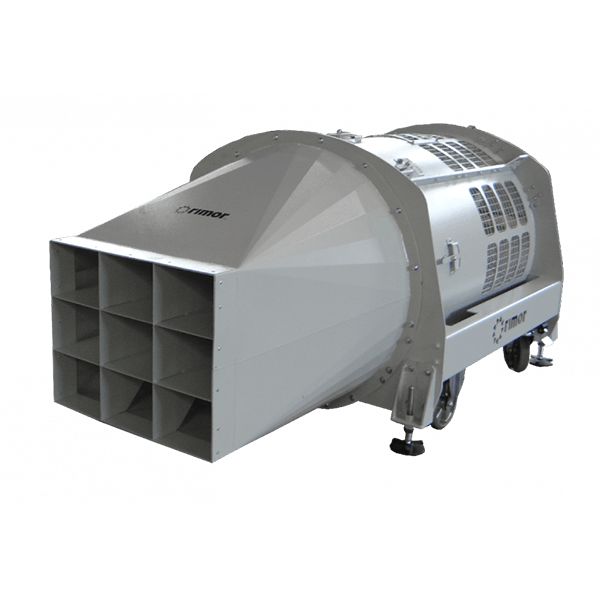
Axial wind simulator – Single stage series
Automotive Testing Fans
The axial wind simulator for chassis dynamometers that are used in the automotive testing sector such as for the testing of cars, motorcycles, trucks, or lorries, are units suitable for the generation of a cooling flow that complies with the current WLTP regulations.
The main advantage is that the axial wind simulator can be positioned against a wall from where it sucks in air as Rimor developed a system that requires no distance behind the fan itself. The air is sucked from the circumference of the body itself through slits that feed the impeller. The impeller is positioned in correspondence with a flow straightener or a pre-distributor which allows to obtain a uniform flow in delivery.
Rimor also developed a particular flow straightener positioned on the outlet criss-cross section which connects perfectly suction and outlet.
The axial wind simulator is built in different sizes and different configurations. It can be equipped with various accessories and coordinates perfectly with the chassis dynamometer following its speed.
Attachments
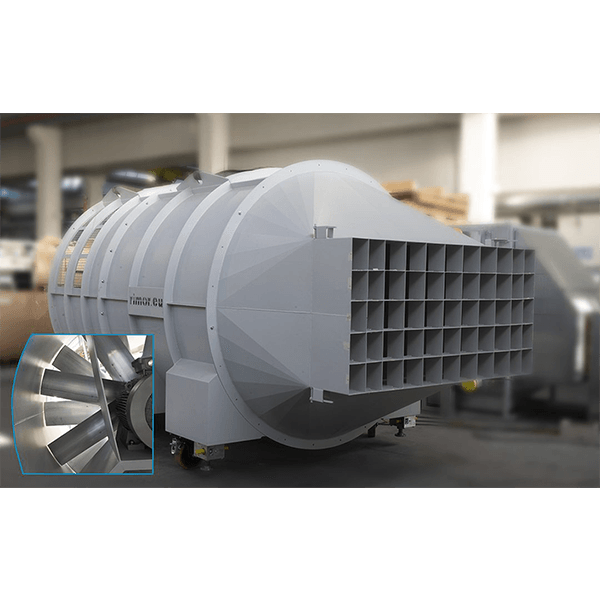
Axial wind simulator – Double stage series
Automotive Testing Fans
The double stage helicoidal wind simulator is a ventilation unit that allows to obtain high flow rates in small spaces with flow speeds for automotive testing (cars, trucks, etc.) that reach up to 200 km/h.
The pressure is obtained thanks to the technology of counter-rotating fans with two opposing motors and the impellers positioned facing each other.
The wind simulator is a powerful and functional flow generator for chassis dynamometer built for an Italian customer for the first time years ago and installed recently for the Indian government testing of motor vehicles and trucks, reaching excellent results.
In fact, the specific shape of the impellers allow to obtain the straightening of the threads so that the perfect uniformity of flow is obtained on the outlet in accordance with the regulations in force.
The double-stage wind simulator now accompanies the halls of major manufacturers where the dimensions of the double-stage centrifugal fan are impossible to manage.
In fact, the double stage helicoidal wind simulator has small dimensions compared to its flow rate and thanks to the double stage two phenomena are obtained together: the doubling of the pressure and the straightening of the threads in order to obtain a uniform flow on the unit outlet.
Attachments
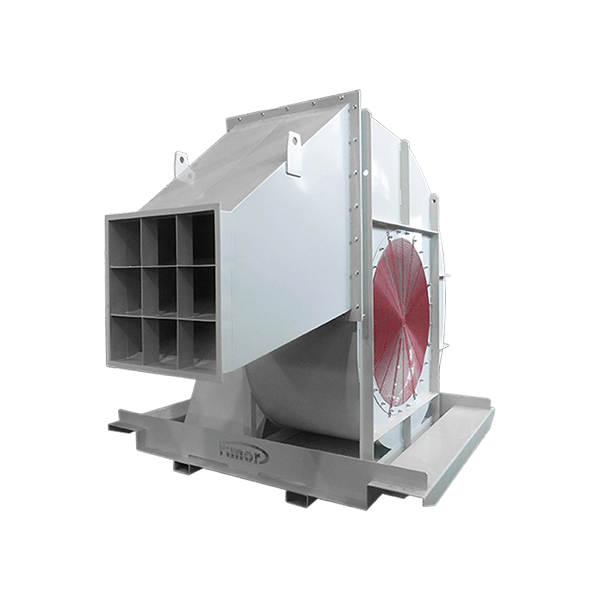
Centrifigual wind simulator – Single stage series
Automotive Testing Fans
The single-stage centrifugal wind simulator was developed by Rimor for automotive testing at high flow rates and high speeds. The centrifugal configuration allows to obtain a uniform flow both on round and square outlets.
The single-suction centrifugal wind simulator has a suction network that makes it safe for use in the room and has a directional mouth on the vehicle under test.
It is also used in gas methane testing systems and testing plants, it is an essential and practical unit that has been installed over years at major manufacturers and testers in the automotive sector.
These series models are in complete compliance with the WLTP regulation.
Attachments
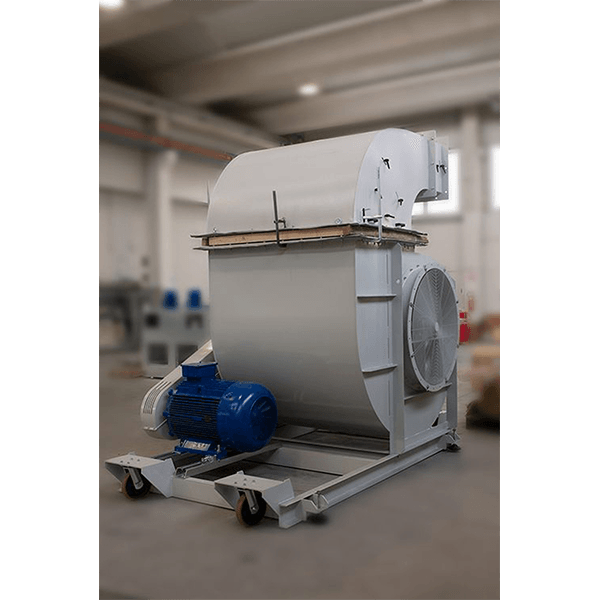
Centrifigual wind simulator – Double suction series
Automotive Testing Fans
For many automotive testing cases, Rimor’s double stage suction series is an ideal solution.
Rimor’s double stage wind simulator allows to double the flow rate by intelligently doubling the air inlets and placing the two opposing centrifugal impellers coupled back to back on a transmission shaft. The two inlet sections take in the same amount of air.
The two separate air streams join together at the outlet allow to obtain a single flow that is used to cool the radiators of auto vehicles during tests or registrations.
Rimor’s centrifugal double suction wind simulator is used in many situations where the size of the chamber (for example its reduced length) does not allow the use of other types of machinery.
Also in this case Rimor dimensions appropriately through CFD an output rectifier to obtain a perfect uniformity and make the ventilation unit compliant according to the WLTP regulation.
Attachments
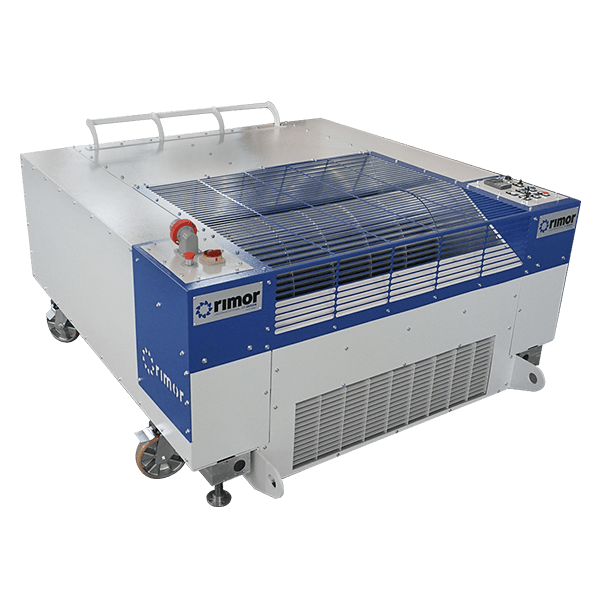
Tangential wind simulator
Automotive Testing Fans
The tangential wind simulator for automotive testing is a ventilation unit with a specific configuration that allows to suck air from the circumference to re-launch it from the circumference itself in a different direction.
Rimor’s tangential wind simulator is characterized by reduced dimensions and perfect uniformity on the outlet in accordance with WLTP regulations.
The tangential wind simulator for the automotive testing sector is used to certify auto vehicles Euro 6 or above. It is a ventilation unit with the ability to lift itself autonomously without the need for external lifting equipment and is a very high-performance machine with speeds up to 180/200 km/h with a perfectly homogeneous flow thanks to its tangential configuration.
The tangential wind generator is manufactured in several sizes and speeds and is also suitable for climate chambers.
Attachments
Accessories
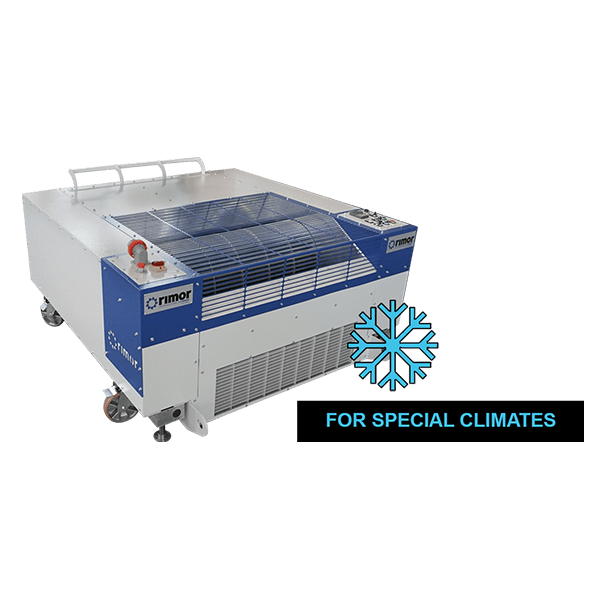
Special climates
Automotive Testing Fans
Often it is necessary to carry out tests in climatic chambers at reduced temperatures (even temperatures at -30°C), in vehicles testing chambers on chassis dynamometers or engine test benches.
The climate at such low temperatures requires special models by Rimor.
Regarding the choice of materials, at low temperatures, traditional materials such as iron become fragile like glass and therefore it becomes necessary to make parts in special materials such as AISI 304 stainless steel.
The climatic version of the wind simulators also includes a special electric motor with a shaft in special material such as molybdenum and the motor bearings are special due to their grease suitable for low temperatures.
The wind simulator for engine testing rooms is suitable for operating in humid climates and low temperatures and allows to generate a perfect flow such as the one at normal temperatures but at low temperatures and allows to perform tests in the automotive testing sector at low temperatures.
The temperature is one of the important parameters in order to carry out a complete test in a climatic chamber with a chassis dynamometer, engine room, or in a testing room in general. Generating the correct cooling flow for the vehicle under test allows you to carry out tests or cooling tests without damaging the car.
The dimensioning of the unit’s power will follow the higher air density so that compared to a traditional ventilation unit there will also be an increased power of the electric motor.
Attachments
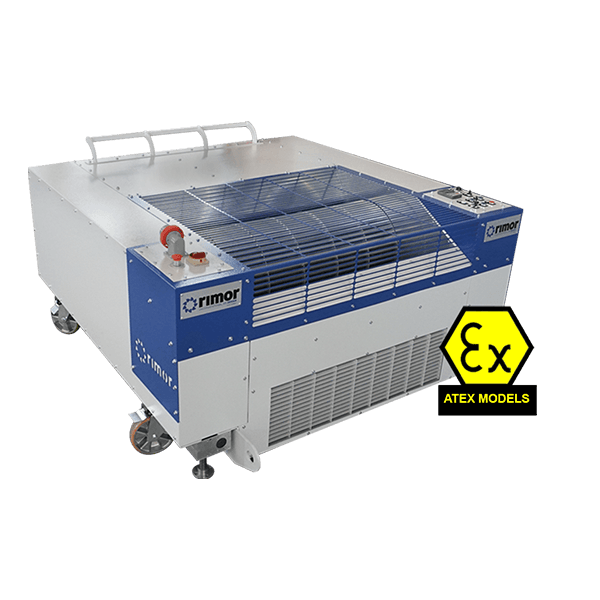
ATEX version series
Automotive Testing Fans
If necessary, it is also possible to have an ATEX certification for the wind simulators. The ATEX version may be required in some cases where environmental conditions can become particularly explosive. The ATEX fans for engine testing rooms are made of materials that do not create sparks during their rotation.
The ATEX version of Rimor axial fans also includes a spark-proof or ATEX electric motor.
Several ATEX zones can also be defined during the test, zone 3 where it is rare that a potentially explosive zone can be created, and zone 2 where an explosive zone is likely to be created.
The ATEX zone is respected by the wind simulators even when it comes to the cables, electric motors, and electric panels.
The ATEX versions of axial fans are also used in atmospheres where it is necessary to operate at reduced temperatures.
Attachments
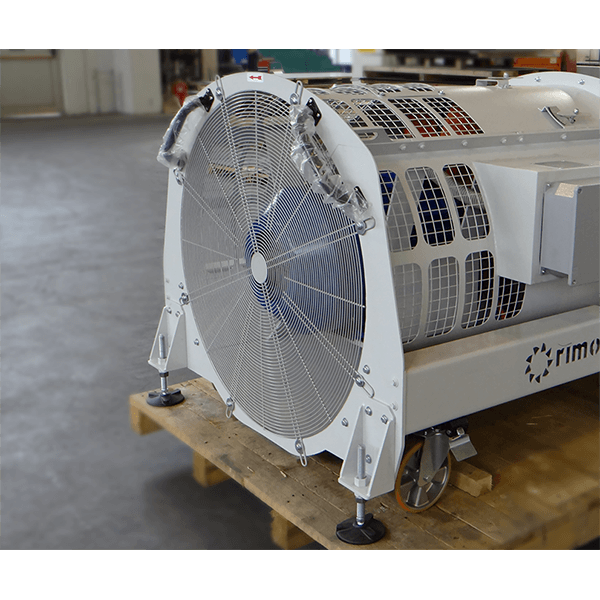
Manual handling on wheels
Automotive Testing Fans
The manual wheel-based handling of wind simulators of all types, axial (single and double stage), centrifugal (single and double suction), tangential – simpler, and more effective model at the same time – is carried out with high-quality wheels and anti feet crush system.
Furthermore, a pair of pivoting wheels and a pair of fixed wheels and are usually made in order to have a pair of directable wheels for handling and a pair of fixed wheels that follow that direction. The manual handling system is equipped with handles for machine pushing even by hand by an operator.
The wheels are made of a material suitable for the walking surfaces of testing chambers and are equipped with bearings for maximum quality and ease of execution.
The handling of the wind simulator through the appropriate pivoting wheels allows the creation of a system that allows the machinery to be moved easily. The system allows the machinery to be towed also by forklifts or other towing systems.
Attachments
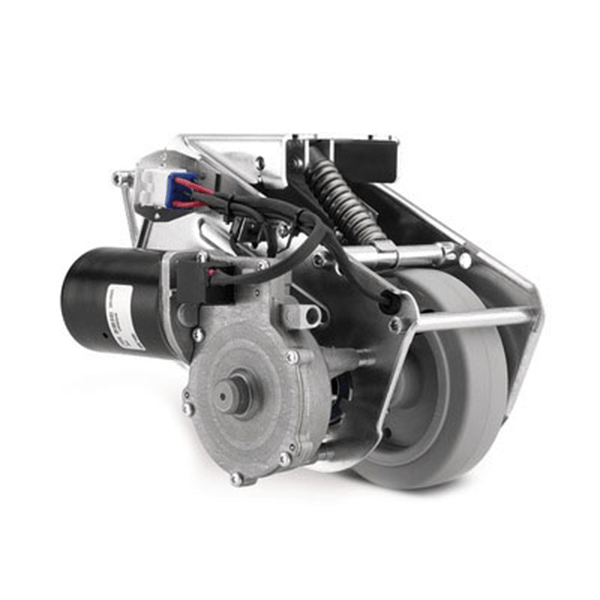
Electrical handling
Automotive Testing Fans
Electrical handling is Rimor’s most technological solution for wind simulators handling.
The operator can act on a lever to move the machinery by operating on a series of levers that activate the motors that move the wheels.
The low-speed electric wheels move the wind simulator inside the testing room without any effort on the part of the operator.
The system is made up of one or two pairs of wheels electrified by an electric motor with batteries on board of the wind simulator.
The agility of control is guaranteed by having kept the same manual handling system, combined with the electric servomotor.
In automotive testing chambers, it is possible that a wind simulator requires to be moved very frequently and this option is, therefore, the most suitable for these cases.
Attachments
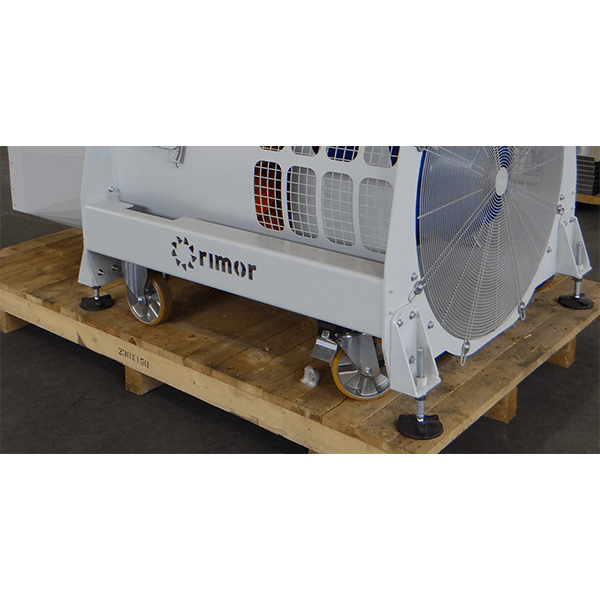
Screw lifting
Automotive Testing Fans
The screw lifting method is the simplest way to lift the wind simulator and bring the outlet in the correspondence of the car radiator.
This system is composed of a mother screw integral with the body of the wind simulator and a trapezoidal screw that can be operated manually or through an electric screwdriver.
The system is usually suitable for positioning the machine at the correct height in a non-continuous way, in the sense that for the systems where it is often necessary to change the height of the wind simulator, Rimor has developed other servo-assisted systems.
Attachments
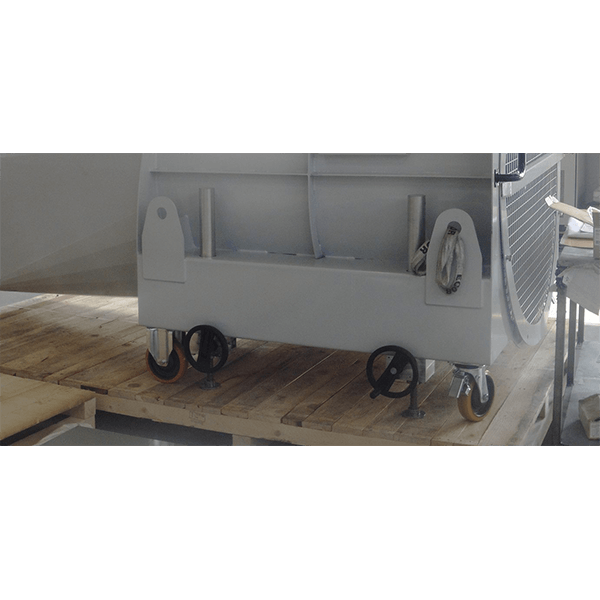
Reducer lifting
Automotive Testing Fans
The manual lifting system with reducer is a practical and economical solution that speeds up and simplifies the manual lifting of the wind simulator in testing rooms.
The reducer allows to easily raise the machine with the simple rotation of a crank and thanks to the worm gear transmission the wind generator is positioned at the desired height. By means of the reducer the operator’s effort is reduced to a minimum.
The operation is completed with the fixing to the ground of the articulated feet for positioning in an inclined position.
It is a system with an excellent result/cost ratio and is the best configuration for the ventilation unit manufactured by Rimor.
It is therefore applied to centrifugal wind generators (single or double suction) and axial fwind generators (single or double stage) and tangential fans.
Attachments
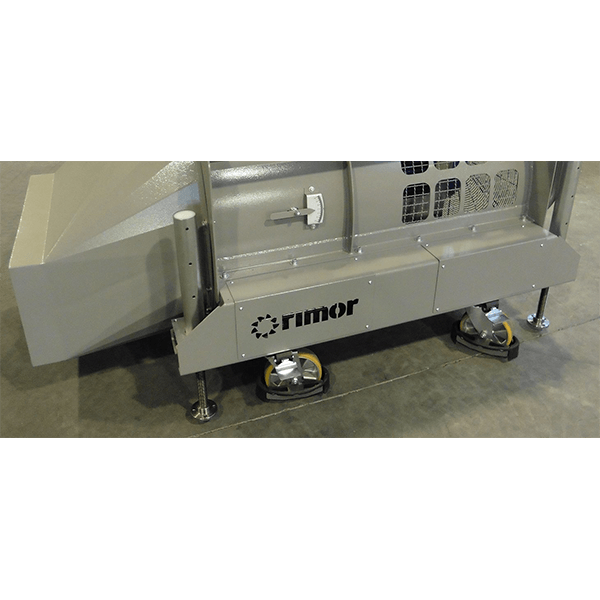
Electrical lifting
Automotive Testing Fans
The electric lifting system is applied to Rimor wind simulators and allows the machinery to be positioned in a precise, easy and comfortable way at the desired height.
The system can be automated and defined heights can be integrated so that it is easy to find the correct and desired height.
The movement of the wind simulators is carried out in testing rooms and it is an essential functionality when the room is used for the test of very different vehicles, therefore there is a need to vary the height to obtain the right positioning.
The system is in the medium-high level lifting range, tested over the years and it is safe as the four points move simultaneously, guaranteeing the mechanical lifespan of the wind simulator.
The system can be operated locally or remotely from an external room.
Attachments

Hydraulic lifting
Automotive Testing Fans
The system is applied on heavier wind simulators where handling is more critical or in climatic chambers where climatic conditions make it difficult to use electric servo-drives.
The hydraulic lifting system allows to position the outlet of the air flow in correspondence with the radiator of the vehicle under test and is one of the most robust systems available on the market.
A control unit inside the wind simulator generates the flow of pressurized oil that is conveyed to the lifters that allows the machine to reach the desired height.
The safety of hydraulics is well known as well as its robustness. It is therefore a system that easily adapts even to critical or extreme situations with rooms where it is necessary to reach extreme working conditions.
The system is used with wind simulator of each range and finds particular application in Rimor’s tangential models.
The hydraulic lifting can be controlled locally or remotely and memorizes the working positions.
Attachments
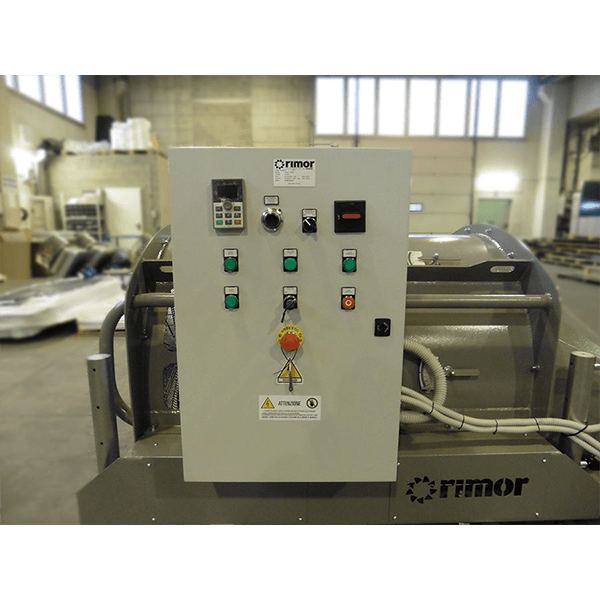
Standard drive
Automotive Testing Fans
The standard drives are generally IP54 electrical panels positioned on board of the wind simulator that is positioned in the testing room for automotive testing.
This drive always has a speed variator inside and has an input connection also with a mobile plug with a flexible cable for mobile connection.
The power cable is sometimes placed on board of the same wind simulator.
The drive can be equipped with local control or be completely remote to be operated from the main electrical panel of the room, then be positioned next to the wind simulator can be placed outside through a connection.
The inverter is vectorial and ensures that the machine or vehicle being tested positioned on the roller bench has the same speed as the flow outgoing from the Rimor wind simulator.
The system is usually controlled on the panel but it is also possible to have a control pendant (portable mobile keyboard) also to be placed in the vehicle for direct control by the operator.
Attachments
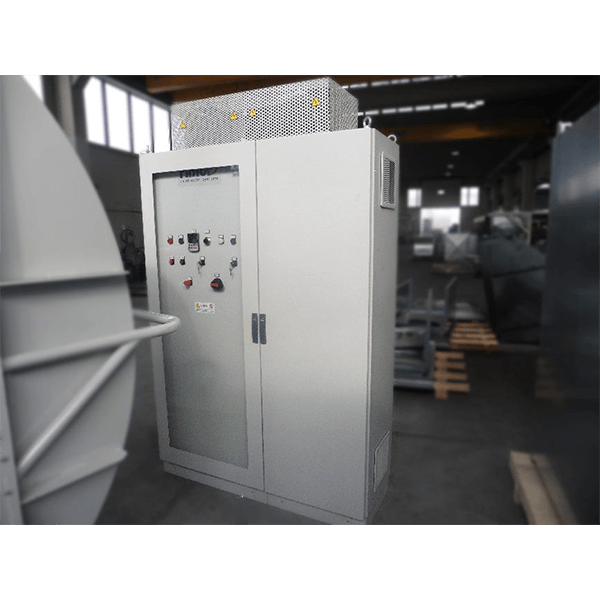
Drive with beaking resistors
Automotive Testing Fans
Drives with breaking resistors can be equipped on all Rimor wind simulators.
During the EURO 6 certification tests or higher it is necessary to perform an acceleration and braking cycle in pre-established times.
In order to ensure that the wind simulators placed in front of the vehicle during the test, correctly follows the deceleration curve of the vehicle during the certification necessary for registration, the inverter is connected with suitable braking resistor which therefore guarantee dissipation on the resistance itself.
The system is then easily remotable in the case of usage in climatic testing chambers: in this case the inverter and resistances are positioned outside the room in order to obtain durability and correct reliability.
The resistors for inverters positioned on the wind simulators can be used on all types of wind simulators.
During Rimor’s in-house testing, the CFD flow is simulated in order to ensure that the correct flow is obtained at different speeds.
Attachments
Other Products
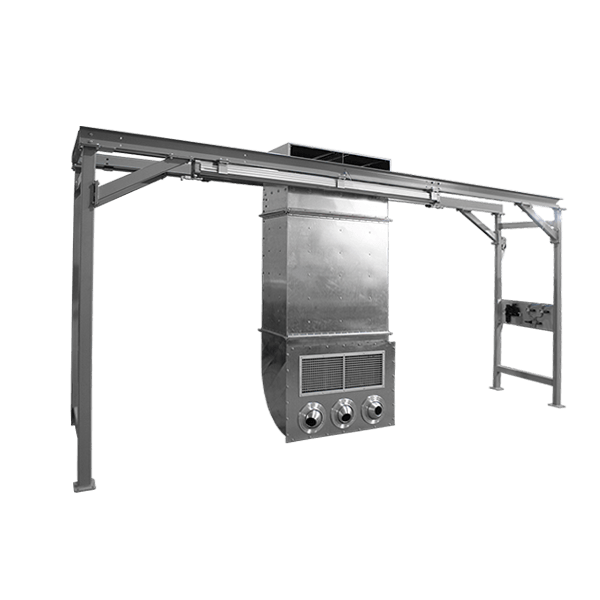
End of line portal
Automotive Testing Fans
The Rimor end-of-line portal for end-of-line test cars is a mobile fan that was created with the aim of cooling cars at their first ignition after production. It’s an automatic portal in the sense that when the car has been tested, it moves around allowing the test car to pass.
It is equipped with a special pneumatic system that limits the displacement force in the event of a collision with a person or with a test car at the end of the line at the first ignition.
It’s a very quiet flow generator that can realize a cooling flow in order to allow the first ignition test of the test vehicles.
The flow rate shall ensure that the vehicle is not overheated during the end-of-line test. Fast and safe handling makes it easy to integrate into a line.
Attachments
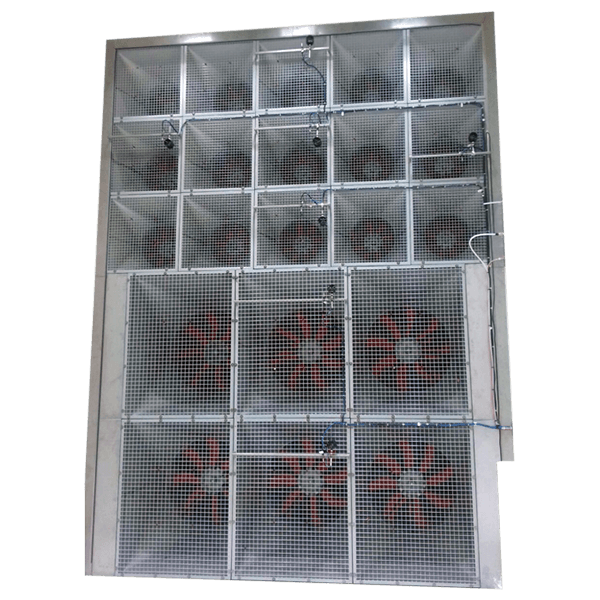
Wall fan
Automotive Testing Fans
The Wall Fan is a high-performance ventilation system that we use to test vehicles, generated by a series of machines placed on a wall in order to generate very high flow rates and with an optimal distribution on the output.
Ventilation for testing of test vehicles and testing of motor vehicles/motor vehicles may be constructed similar to a wind tunnel. It is a system where several fans are placed on a ventilating wall placed in front of the test car in a climatic room or in an engine test room or in a car registration cabin with a management system that determines a high uniformity output flow and high performance.
The system is capable of generating a flow oriented towards the vehicle or the articulated vehicle under test but it is also possible to use it for the test of buses/coaches under test.
The system is often used to test the cooling and air conditioning systems of motor vehicles, coaches or tractors and is safely used when the test concerns even extreme climatic conditions with tests at below zero temperature and even at -30 C.
The Wall Fan is available in standard or special materials such as AISI 304 or other.
Attachments

Engine testing chamber ventilation
Automotive Testing Fans
Engine test cell ventilation is a hot-flow, engine test room, other components or even automotive test room system.
The ventilation of the engine test cells with the Recube system applied in the tests of motor vehicles or components such as exhaust systems or cooling of motor vehicles allows to realize a flow of the engine test rooms of motor vehicles with particular attention to small size.
Ventilation systems for engine test rooms and hot test cells solve the heat emission problem of the test component. These systems can also be used for radiator testing, endothermic engine testing or testing of automotive and motor vehicle braking systems. The brake test or the engine test are then also accompanied by the test of exhaust systems or exhaust tests. Traditional systems are usually bulky while the
ventilation system Recube Rimor is compact in size and low noise.
The system can also be used where you have a sound proof room as it is able to contain the noise of the room itself.
The test room ventilation designed by Rimor is the ideal solution for flushing and cooling engine and soundproof test rooms for automotive and engine test rooms.
Ideal for ventilating test rooms of tractors, trucks, vehicles in general, trucks and trucks under test.
Thanks to the fluid dynamic simulation of Rimor you get a real, complete ventilation of the room.
Attachments
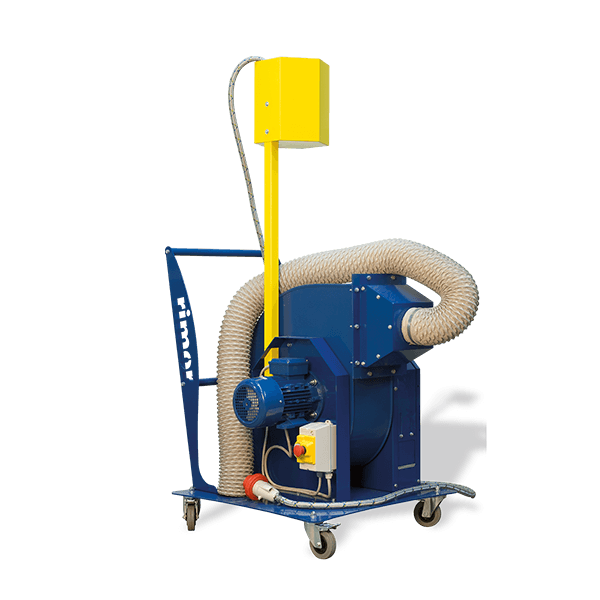
Hot spots cooling
Automotive Testing Fans
During the testing and testing of automotive vehicles and components, there is a frequent need to dissipate hot spots such as brakes in tests for motor vehicles or motor vehicles, engine parts in hot tests or heat generating parts such as clutches or gearboxes. Normally when the vehicle is in motion these parts are naturally cooled but in the engine test cells or vehicle test rooms, this is not possible in a natural way and therefore you can use the cooling cart Subfan Rimor that provides a flow of 120 km/ h directional on the part to be cooled avoiding the brake test or the clutch test or generally the hot part is not damage during the test and during the test.
The Subfan or Hot Spot trolley can be easily installed in the room and is equipped with an electric panel on board to drive or (e) a flexible hose that brings the cooling air to the hot point to be cooled.
The Subfan hot spot cooler is soundproof to keep the noise below 80 dB(A), resulting in a safe environment.
Rimor’s hot spot cooling trolley is a product of twenty-year presence on the market installed at many plants such as F.C.A., General
Motors, P.S.A., Huskvarna and ENI.
Attachments
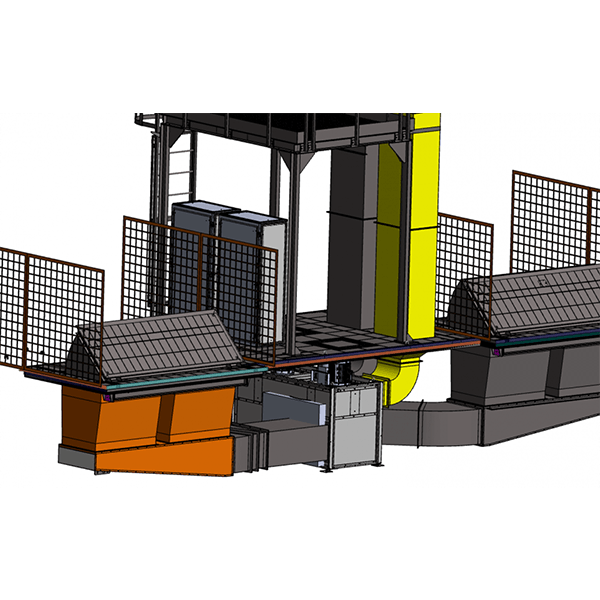
Discharge gases extraction plant
Automotive Testing Fans
Gas extraction in engine or vehicle test rooms is a problem that arises when testing the endothermic engine -or turbocharger tests, tests of the engine cooling system of passenger cars including tractors, trucks, trucks and trucks- or engine test rooms, exhaust gases shall be generated to be extracted and directed outwards.
The Recube gas extraction system is also insulated and safe and is equipped with the Stop-Heat Rimor system on the engine shaft with minimum temperature safety on the crankshaft.
The system is easy to install in engine test rooms that usually require tight spaces. The Rimor exhaust gas ventilation and extraction system is of high quality not only in the choice of materials but in ATEX executions for high temperature and avoids any leakage of gas from the circuit itself.
Attachments
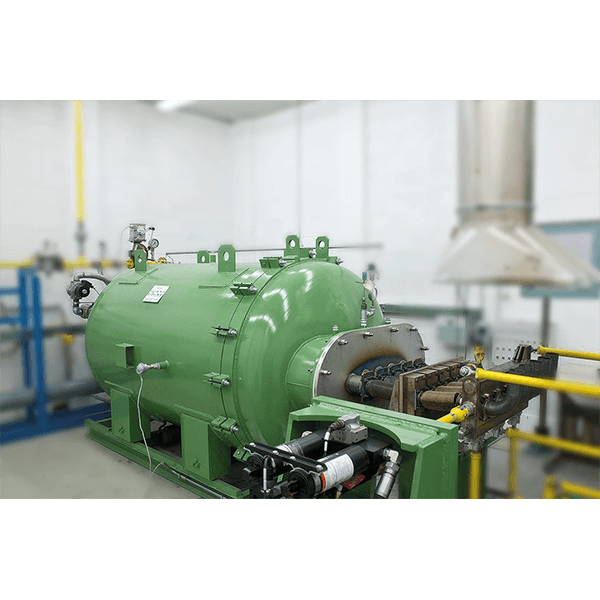
Hot air generator and discharge system
Automotive Testing Fans
The sleeves and exhaust systems require a durability test often combined with vibration systems to test the solidity and durability.
Such sleeves or exhaust systems or mufflers or turbochargers need to be tested by a high-pressure hot air flow that overcomes the exhaust system’s backpressure.
The backpressure can also reach 1 bar for testing sports cars and racing cars. The Rimor then produces hot air generators up to 1000 º C and up to 1 Bar of pressure with compressors for the air that is then conveyed and heated up to reach the operating temperature of the sleeve.
The hot and hot air generator can be configured with multiple outputs in order to deliver hot air to the sleeves at the desired temperature to multiple exhaust systems or to multiple turbo compressors
It simulates exactly a flow from an endothermic engine that flows to the component to be tested with a hot flow.
The system consists of a compressor and a special high pressure burner that allows you to heat the system and allow you to get the real situation of the component that is usually then combined with a vibration simulation system for example with a bench.
Attachments
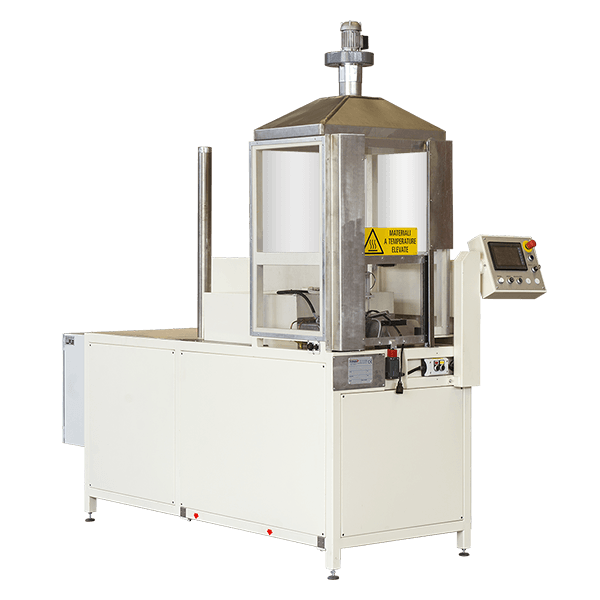
Lamba test machines
Automotive Testing Fans
Simulators for Lambda probes or EGT probes are hot air generators up to 1000 C which allow to generate flows with different gas compositions in order to test the correct operation of Lambda probes and EGT probes.
The lambda probe monitors the exhaust gas then the gas generator for lambda test varies the composition of the hot gas going then to invest the lambda probe with gas with different composition.
The same concept applies in the testing of EGT probes with therefore the possibility of quickly changing the composition of the gas to test the reaction curve of the EGT probe.
The lambda or EG probes test is used both in the production of probes in the automotive and in the aftermarket where the probes must have the same reaction as the original probes.
In this case, in the aftermarket, first test the original probe then the aftermarket probe and compare the reaction curve.
It is possible to configure the test bench, in the case of a manufacturer-specific product, to the manufacturer’s requirements.
The electronics and the interface to the electromechanical and heating systems allow to obtain a practical and effective test machine.


